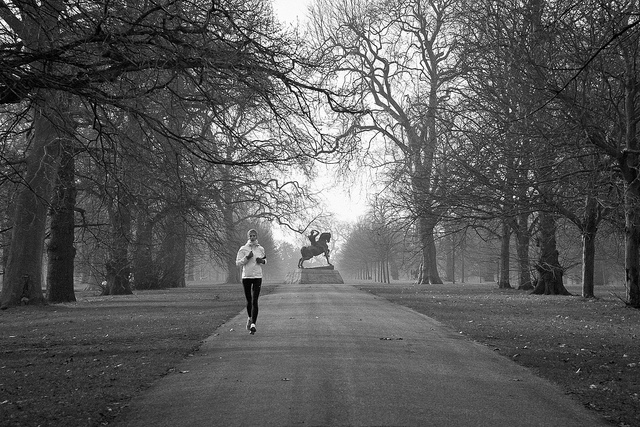Revisiting Minimalist Running – Maximize your potential

The minimalistic running movement has been growing rapidly and I have increasingly fielded questions about it in the clinic. I have noticed equal interest from those who are injured, those looking for proactive care, and those looking to increase performance. Minimalistic running, which includes barefoot running has been featured in major running magazines, book publications and even network news. You really don’t have to look further than the shoe retailer’s wall to notice the trend. Pretty much every major shoe company has developed their own version of a minimalistic shoe to sell next their shoe loaded with technology (stabilizers, cushioning, elastic recoil etc).
Advocates of minimalistic or barefoot running believe that it can minimize impact forces and promote safer running mechanics. Your foot is loaded with sensors to gather crucial information that the body processes to modulate body mechanics. A shoe can decrease the ability of your foot to sense ground surface hardness, surface contours and foot on surface impact force. To put it simply, footwear can make your feet dumb. Studies have shown landing on shock absorption materials used in shoes actually increases the foot-surface impact forces compared to barefoot striking. In other words, subjects tended to land with greater force on softer materials compared to barefoot landing. Not only is this extra force absorbed by the foot, without proper adaptive strategies it is transmitted to your ankle, knee, hips and even into your spine possibly leading to a multitude of injuries.
Now, I am not advocating everyone ditch their running shoes and start barefoot running or buy a pair of minimalistic shoes as some extreme advocates preach. That would be a recipe for a sure injury. But I strongly believe that minimalistic running is an effective tool to improve your running mechanics and often recommend it to my clients. Clinically I find that it can quickly enhance an individual’s ability to run softer and safer by increasing the ability to sense ground impact. This will promote efficient activation of your body’s own shock absorption mechanisms. However, you must take certain precautions and progressive measures to take advantage of its benefits.
- Progressive Loading: You must be gradual with the amount of time you spend in your minimalistic shoes or barefoot. Start with only a minute of running and increase by 1 minute per run.
- Running Mechanics: Just because you run barefoot or in minimalistic shoes, it doesn’t mean you are running with proper mechanics.
- Monitor Symptoms: You must listen to your body as you partake in this new exercise. Pain is most likely an indicator that you have tried to progress too quickly. Be patient!
- It doesn’t have to be full time: You can use minimalistic running strictly as a running drill. You can use it to enhance your running and not substitute it.
If you have been thinking of transitioning to minimalistic running, I hope these tips help you do it safely. If you are dealing with a current injury, a physiotherapist at PhysioWorks will be more than happy to work with you or feel free to book in for a video gait analysis.
Rob Iwasaki, BScPT, BScKin, Clinical STOTT Pilates, CAFCI, IMS

About twice a month our therapists will be posting answers to commonly asked questions. So, if you have a burning question that you want answered let us know in the comments below.
We can cover anything ranging from active rehabilitation, to injury prevention.
This week our featured therapist is Rob Iwasaki. To learn more about Rob check out our PhysioWorks team.


Leave a Reply